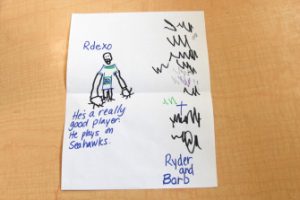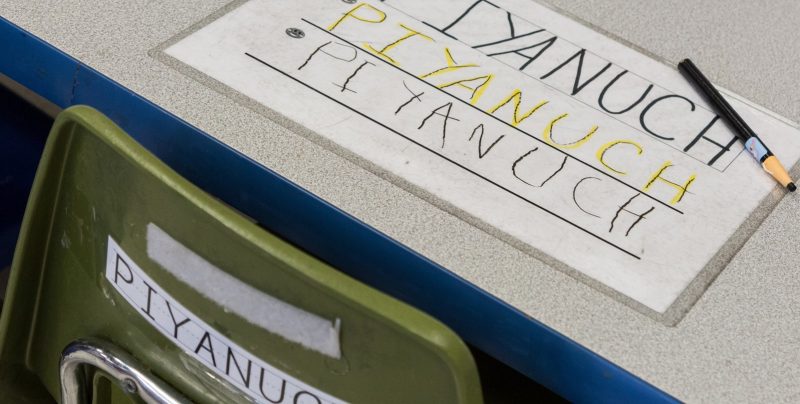7.3: Alphabet Knowledge Instruction
- Page ID
- 216673
\( \newcommand{\vecs}[1]{\overset { \scriptstyle \rightharpoonup} {\mathbf{#1}} } \)
\( \newcommand{\vecd}[1]{\overset{-\!-\!\rightharpoonup}{\vphantom{a}\smash {#1}}} \)
\( \newcommand{\dsum}{\displaystyle\sum\limits} \)
\( \newcommand{\dint}{\displaystyle\int\limits} \)
\( \newcommand{\dlim}{\displaystyle\lim\limits} \)
\( \newcommand{\id}{\mathrm{id}}\) \( \newcommand{\Span}{\mathrm{span}}\)
( \newcommand{\kernel}{\mathrm{null}\,}\) \( \newcommand{\range}{\mathrm{range}\,}\)
\( \newcommand{\RealPart}{\mathrm{Re}}\) \( \newcommand{\ImaginaryPart}{\mathrm{Im}}\)
\( \newcommand{\Argument}{\mathrm{Arg}}\) \( \newcommand{\norm}[1]{\| #1 \|}\)
\( \newcommand{\inner}[2]{\langle #1, #2 \rangle}\)
\( \newcommand{\Span}{\mathrm{span}}\)
\( \newcommand{\id}{\mathrm{id}}\)
\( \newcommand{\Span}{\mathrm{span}}\)
\( \newcommand{\kernel}{\mathrm{null}\,}\)
\( \newcommand{\range}{\mathrm{range}\,}\)
\( \newcommand{\RealPart}{\mathrm{Re}}\)
\( \newcommand{\ImaginaryPart}{\mathrm{Im}}\)
\( \newcommand{\Argument}{\mathrm{Arg}}\)
\( \newcommand{\norm}[1]{\| #1 \|}\)
\( \newcommand{\inner}[2]{\langle #1, #2 \rangle}\)
\( \newcommand{\Span}{\mathrm{span}}\) \( \newcommand{\AA}{\unicode[.8,0]{x212B}}\)
\( \newcommand{\vectorA}[1]{\vec{#1}} % arrow\)
\( \newcommand{\vectorAt}[1]{\vec{\text{#1}}} % arrow\)
\( \newcommand{\vectorB}[1]{\overset { \scriptstyle \rightharpoonup} {\mathbf{#1}} } \)
\( \newcommand{\vectorC}[1]{\textbf{#1}} \)
\( \newcommand{\vectorD}[1]{\overrightarrow{#1}} \)
\( \newcommand{\vectorDt}[1]{\overrightarrow{\text{#1}}} \)
\( \newcommand{\vectE}[1]{\overset{-\!-\!\rightharpoonup}{\vphantom{a}\smash{\mathbf {#1}}}} \)
\( \newcommand{\vecs}[1]{\overset { \scriptstyle \rightharpoonup} {\mathbf{#1}} } \)
\( \newcommand{\vecd}[1]{\overset{-\!-\!\rightharpoonup}{\vphantom{a}\smash {#1}}} \)
\(\newcommand{\avec}{\mathbf a}\) \(\newcommand{\bvec}{\mathbf b}\) \(\newcommand{\cvec}{\mathbf c}\) \(\newcommand{\dvec}{\mathbf d}\) \(\newcommand{\dtil}{\widetilde{\mathbf d}}\) \(\newcommand{\evec}{\mathbf e}\) \(\newcommand{\fvec}{\mathbf f}\) \(\newcommand{\nvec}{\mathbf n}\) \(\newcommand{\pvec}{\mathbf p}\) \(\newcommand{\qvec}{\mathbf q}\) \(\newcommand{\svec}{\mathbf s}\) \(\newcommand{\tvec}{\mathbf t}\) \(\newcommand{\uvec}{\mathbf u}\) \(\newcommand{\vvec}{\mathbf v}\) \(\newcommand{\wvec}{\mathbf w}\) \(\newcommand{\xvec}{\mathbf x}\) \(\newcommand{\yvec}{\mathbf y}\) \(\newcommand{\zvec}{\mathbf z}\) \(\newcommand{\rvec}{\mathbf r}\) \(\newcommand{\mvec}{\mathbf m}\) \(\newcommand{\zerovec}{\mathbf 0}\) \(\newcommand{\onevec}{\mathbf 1}\) \(\newcommand{\real}{\mathbb R}\) \(\newcommand{\twovec}[2]{\left[\begin{array}{r}#1 \\ #2 \end{array}\right]}\) \(\newcommand{\ctwovec}[2]{\left[\begin{array}{c}#1 \\ #2 \end{array}\right]}\) \(\newcommand{\threevec}[3]{\left[\begin{array}{r}#1 \\ #2 \\ #3 \end{array}\right]}\) \(\newcommand{\cthreevec}[3]{\left[\begin{array}{c}#1 \\ #2 \\ #3 \end{array}\right]}\) \(\newcommand{\fourvec}[4]{\left[\begin{array}{r}#1 \\ #2 \\ #3 \\ #4 \end{array}\right]}\) \(\newcommand{\cfourvec}[4]{\left[\begin{array}{c}#1 \\ #2 \\ #3 \\ #4 \end{array}\right]}\) \(\newcommand{\fivevec}[5]{\left[\begin{array}{r}#1 \\ #2 \\ #3 \\ #4 \\ #5 \\ \end{array}\right]}\) \(\newcommand{\cfivevec}[5]{\left[\begin{array}{c}#1 \\ #2 \\ #3 \\ #4 \\ #5 \\ \end{array}\right]}\) \(\newcommand{\mattwo}[4]{\left[\begin{array}{rr}#1 \amp #2 \\ #3 \amp #4 \\ \end{array}\right]}\) \(\newcommand{\laspan}[1]{\text{Span}\{#1\}}\) \(\newcommand{\bcal}{\cal B}\) \(\newcommand{\ccal}{\cal C}\) \(\newcommand{\scal}{\cal S}\) \(\newcommand{\wcal}{\cal W}\) \(\newcommand{\ecal}{\cal E}\) \(\newcommand{\coords}[2]{\left\{#1\right\}_{#2}}\) \(\newcommand{\gray}[1]{\color{gray}{#1}}\) \(\newcommand{\lgray}[1]{\color{lightgray}{#1}}\) \(\newcommand{\rank}{\operatorname{rank}}\) \(\newcommand{\row}{\text{Row}}\) \(\newcommand{\col}{\text{Col}}\) \(\renewcommand{\row}{\text{Row}}\) \(\newcommand{\nul}{\text{Nul}}\) \(\newcommand{\var}{\text{Var}}\) \(\newcommand{\corr}{\text{corr}}\) \(\newcommand{\len}[1]{\left|#1\right|}\) \(\newcommand{\bbar}{\overline{\bvec}}\) \(\newcommand{\bhat}{\widehat{\bvec}}\) \(\newcommand{\bperp}{\bvec^\perp}\) \(\newcommand{\xhat}{\widehat{\xvec}}\) \(\newcommand{\vhat}{\widehat{\vvec}}\) \(\newcommand{\uhat}{\widehat{\uvec}}\) \(\newcommand{\what}{\widehat{\wvec}}\) \(\newcommand{\Sighat}{\widehat{\Sigma}}\) \(\newcommand{\lt}{<}\) \(\newcommand{\gt}{>}\) \(\newcommand{\amp}{&}\) \(\definecolor{fillinmathshade}{gray}{0.9}\)Fostering Children's Alphabet Knowledge
The National Association for the Education of Young Children (NAEYC) and the International Reading Association (IRA) stress that meaningful and fun activities best enhance children’s alphabet knowledge.
Memorizing letters is neither fun nor meaningful, and consequently doesn’t teach children to read.
Alphabet knowledge is related to print concepts. You may wish review Chapter 6, especially 6.1: Concepts of Print, 6.3: Explicit Print Knowledge Instruction, and 6.4: Print Referencing, paying particular attention to the parts referencing letter names and letter sounds.
Letter recognition
Start letter recognition with words familiar and meaningful to children, like their names! Where do you have children’s names in your classroom? For example, one teacher puts names on objects that are related to each learning center. She put children’s names on paint stirrers in the art center and on rulers in the math center.
Think about using puzzles in your classroom. How could you make puzzles out of children’s names for them to play with at centers?
Video: Using Names During Circle Time
Here’s an example (1:27) of an educator dismissing children from circle time to centers. As you watch the video, think about ways the educator is increasing children’s alphabet knowledge. Have you used similar strategies in your own early learning setting?
Alphabet Toys and Books
Many alphabet toys and books can be placed in relevant and accessible locations around children’s learning environments both at school and at home. Include all the languages the children speak. For children who may need more support, consider having children work in small groups so peers, siblings, or friends can play together with alphabet toys and books.
If toys aren’t available in a child’s home language, teachers can partner with families to make similar ones using the letters or characters of their language. Again, represent all languages children in the classroom speak. This causes children to feel more welcome, comfortable, confident, and included.
How have you, or can you, incorporate alphabet toys in your own classroom?
Letters
In addition to alphabet toys, you can display letters for children to reference and manipulate throughout the classroom. In this classroom letters are readily available near the writing center. Consider using glue and fabrics to create tactile images and letters children can feel and trace with their fingers. You can use tactile picture books and create labels in Braille.

In this set-up, letters are always available to point out when talking with children.
Early Alphabet Knowledge
Early alphabet knowledge is also closely related to writing. Look at these examples of a child’s early writing.
The example on the left was obtained early in the school year and the sample on the right after the winter holidays.


- What does this child know about the alphabet?
- What does the child know about literacy? How do you know?
- How might this child have learned about the alphabet and literacy?
If you see a child who is a multilingual learner creating letter-like forms and scribbling, make sure you share it with the child’s family. They may recognize letters and words in their language, so then the child’s home language skills can be documented and built upon in the classroom.
Writing Centers
Because of the close connection between writing and alphabet knowledge, early education centers can benefit by adding writing centers as one of the daily choices in the classroom. For example, educators can place a booklet of the children’s pictures with their names and a booklet of words that are targets in the current theme-based curriculum at the writing center.
For children who may need additional support, consider using adaptive seating or positioning to make sure they are comfortable and stable when drawing or writing. Use tape or Velcro to stabilize paper. Make writing tools easier to manipulate. Add large foam grips or wrap masking tape around crayons, markers, and brushes so they’re easier to hold. Use letter stamps or magnetic letters.
Infants and toddlers should also have access to non-toxic drawing and writing instruments so they can explore them through their senses and learn to make marks with them.
Crayons and markers can be placed in clothes pins that have been hot-glued on the sides of toys for fun and function so that children can easily access them and write whenever they feel inspired.
Writing to Make Center Choices
Here is an example of encouraging children’s alphabet knowledge through writing when it comes to center choices. Ask children to write their name beside their choice of centers. It’s helpful for children to see their names, but they learn even more when they get to write it and think about the letter names and shapes.

When a center is full, you can also ask children to write their names on waiting lists. Giving children many opportunities to see and write their names throughout the day will help them develop alphabet knowledge in fun and meaningful ways!


